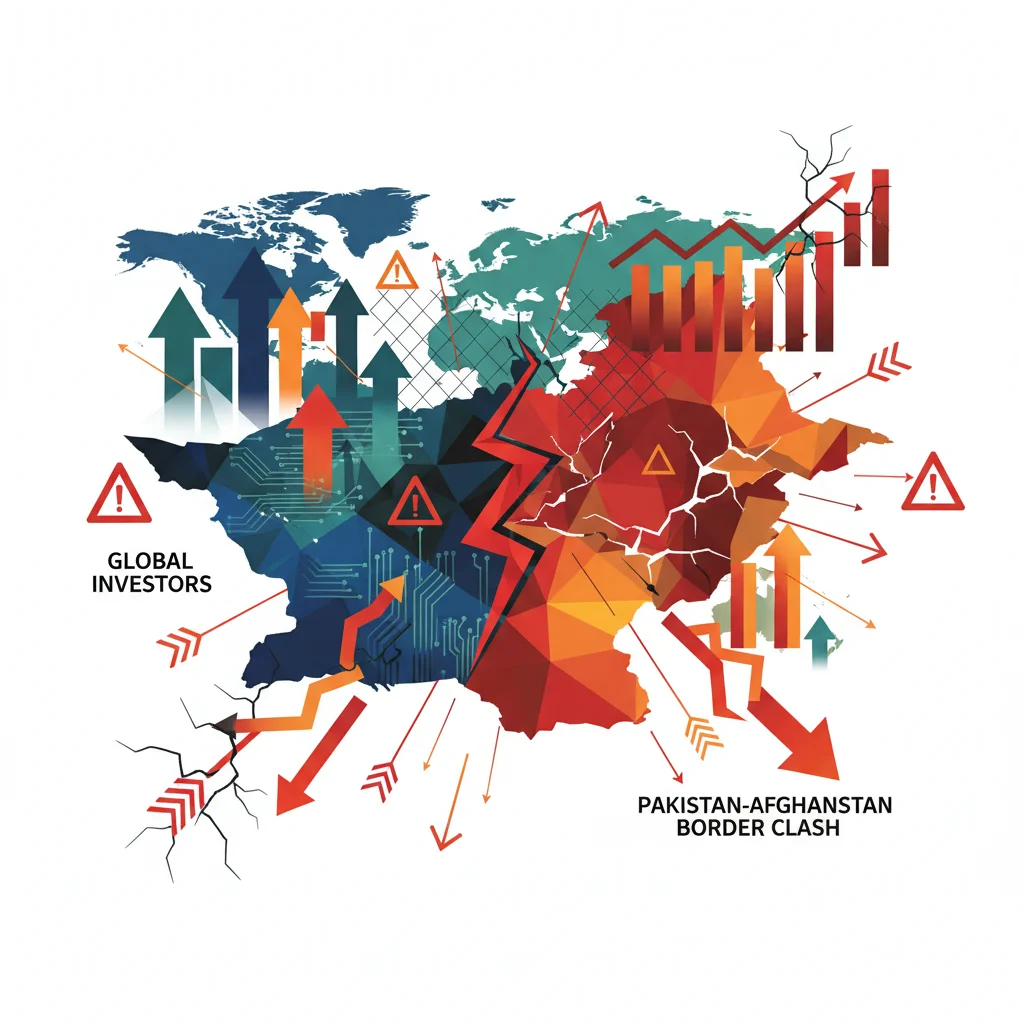
Beyond the Battlefield: Why the Pakistan-Afghanistan Border Clash is a Red Flag for Global Investors
In the volatile landscape of global geopolitics, certain flashpoints serve as critical barometers for regional stability and, by extension, international investment risk. The recent escalation on the Pakistan-Afghanistan border is one such event. While headlines focused on the tragic loss of 23 Pakistani soldiers in a deadly attack claimed by militants, the story for investors, finance professionals, and business leaders runs much deeper. This is not merely a regional skirmish; it’s a stark reminder of the intricate web connecting security, economic policy, and capital flows in one of the world’s most strategic corridors.
The incident, which saw militants ram an explosives-laden vehicle into a military post in Pakistan’s Khyber Pakhtunkhwa province, prompted what the Taliban government in Afghanistan called a “retaliatory operation” after accusing Islamabad of conducting air strikes on its territory. This cycle of violence and accusation threatens to unravel a fragile status quo, with significant implications for anyone with economic interests tied to South and Central Asia. Understanding these ripple effects is crucial for navigating the complexities of emerging markets and adjusting investment strategies to account for heightened geopolitical risk.
The Geopolitical Tinderbox: A Briefing on the Durand Line Dispute
To grasp the financial implications, one must first understand the historical context. The conflict is centered around the Durand Line, a 2,670-kilometer border established in 1893 between British India and Afghanistan. Since Pakistan’s inception in 1947, no Afghan government has ever formally recognized this border, leading to decades of mistrust and sporadic conflict. This porous and often contested frontier has become a sanctuary for various militant groups, most notably the Tehreek-e-Taliban Pakistan (TTP), an ideological ally of the Afghan Taliban that seeks to overthrow the Pakistani state.
For years, Islamabad has accused Kabul of not doing enough to contain TTP militants who launch attacks in Pakistan before retreating across the border. The recent attack, one of the deadliest in recent years (source), represents a severe escalation, pushing Pakistan’s strategic patience to its limit. For the global investor, this long-simmering dispute is no longer a footnote in a regional security report; it is now a primary driver of market volatility and a direct threat to regional economic integration projects.
Economic Contagion: How Border Instability Shakes a Fragile Economy
The immediate impact of such instability is felt within Pakistan’s already beleaguered economy. The nation is currently navigating a precarious path, propped up by a standby arrangement with the International Monetary Fund (IMF) and seeking a larger, long-term bailout. Heightened security threats necessitate increased military expenditure, diverting precious funds away from critical development and economic stabilization programs. This creates a vicious cycle: instability drains the national exchequer, which in turn spooks investors, puts pressure on the currency, and makes it harder to meet the stringent conditions of international lenders.
For those watching the Pakistan stock market (PSX), these events translate directly into risk-off sentiment. The KSE 100 Index, a key barometer of investor confidence, becomes highly susceptible to news of political and security instability. Foreign portfolio investment, already skittish, is likely to recede further, while domestic investors may shift capital towards safer assets. The core principle of investing is the pricing of risk, and a hot conflict on the border sends the risk premium soaring.
Furthermore, the conflict directly disrupts vital trade arteries. The border crossings at Torkham and Chaman are not just lines on a map; they are crucial economic lifelines for both Afghanistan and the wider Central Asian region, facilitating the transit of goods to and from Pakistan’s seaports. When these borders are sealed


